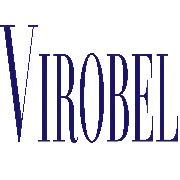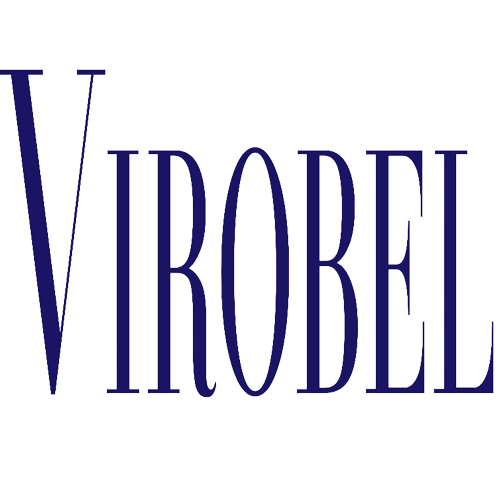- Have any questions?
- +41 43 215 20 27
- contact@virobel.com
lvmh subsidiaries
I. Introduction
– Brief overview of LVMH as a luxury goods conglomerate
– Importance of understanding LVMH’s subsidiaries
II. Overview of LVMH
– Background information on LVMH’s establishment and growth
– Key figures and financial performance of the company
III. LVMH’s Fashion and Leather Goods Division
– Description of the division’s role within LVMH
– Overview of key subsidiaries, such as Louis Vuitton, Dior, Fendi, and Givenchy
– Discussion of each subsidiary’s brand positioning and contribution to LVMH’s overall success
IV. LVMH’s Perfumes and Cosmetics Division
– Description of the division’s role within LVMH
– Overview of key subsidiaries, such as Guerlain, Benefit, and Sephora
– Discussion of each subsidiary’s products and market presence
V. LVMH’s Watches and Jewelry Division
– Description of the division’s role within LVMH
– Overview of key subsidiaries, such as TAG Heuer, Bulgari, and Hublot
– Discussion of each subsidiary’s brand reputation and market share
VI. LVMH’s Selective Retailing Division
– Description of the division’s role within LVMH
– Overview of key subsidiaries, such as DFS Group and Le Bon Marché
– Discussion of each subsidiary’s unique offerings and target audience
VII. LVMH’s Other Businesses
– Overview of other subsidiaries and businesses under LVMH, such as hospitality and wine & spirits
– Discussion of their contributions to LVMH’s overall diversification and growth strategy
VIII. Conclusion
– Recap of LVMH’s subsidiaries and their significance
– Final thoughts on the future prospects of LVMH and its subsidiaries.
LVMH, or Moët Hennessy Louis Vuitton, is a luxury goods conglomerate that has established itself as a powerhouse in the industry. With a diverse portfolio of subsidiaries spanning fashion, cosmetics, watches, jewelry, and more, understanding LVMH’s subsidiaries is crucial to grasping the company’s overall success.
In this article, we will provide an overview of LVMH, including its background and financial performance. We will then delve into each division of the conglomerate, starting with the Fashion and Leather Goods Division. This division includes iconic brands such as Louis Vuitton, Dior, Fendi, and Givenchy, each contributing to LVMH’s overall success with their unique brand positioning.
Next, we will explore LVMH’s Perfumes and Cosmetics Division, which includes subsidiaries like Guerlain, Benefit, and Sephora. We will discuss the products offered by each brand and their market presence, highlighting their contributions to LVMH’s dominance in the industry.
Moving on, we will examine LVMH’s Watches and Jewelry Division, which boasts prestigious brands like TAG Heuer, Bulgari, and Hublot. We will explore the brand reputation and market share of each subsidiary, showcasing their significance within the division and LVMH as a whole.
Additionally, we will explore LVMH’s Selective Retailing Division, which includes subsidiaries such as DFS Group and Le Bon Marché. We will discuss the unique offerings and target audience of each subsidiary, shedding light on their role within the division and LVMH’s overall strategy.
Furthermore, we will touch upon LVMH’s other businesses, such as its ventures in hospitality and wine & spirits. We will highlight their contributions to LVMH’s diversification and growth strategy, further solidifying the conglomerate’s position in the luxury goods market.
In conclusion, this article will provide a comprehensive understanding of LVMH’s subsidiaries and their significance. By exploring each division and its key players, we will gain insight into the conglomerate’s overall success. Finally, we will offer our thoughts on the future prospects of LVMH and its subsidiaries, as they continue to shape the luxury goods industry.
Introduction:
LVMH, also known as Moët Hennessy Louis Vuitton, is a luxury goods conglomerate that has established itself as a dominant force in the industry. Understanding the various subsidiaries under LVMH is crucial in comprehending the company’s vast reach and influence. This article aims to provide an overview of LVMH’s subsidiaries and their contributions to the conglomerate’s success.
Overview of LVMH:
LVMH was established in 1987 through the merger of Moët Hennessy and Louis Vuitton. Since then, it has grown into a global powerhouse, encompassing a wide range of luxury brands across multiple sectors. The company is headquartered in Paris, France, and has a strong presence in markets worldwide. LVMH’s financial performance has been consistently impressive, with annual revenues reaching billions of dollars.
LVMH’s Fashion and Leather Goods Division:
The Fashion and Leather Goods Division is one of the key pillars of LVMH’s business. It includes renowned luxury brands such as Louis Vuitton, Dior, Fendi, and Givenchy. Each of these subsidiaries plays a significant role in LVMH’s overall success. Louis Vuitton, for instance, is known for its iconic monogrammed bags and has established itself as a symbol of luxury and elegance. Dior, on the other hand, is renowned for its haute couture and ready-to-wear collections. Fendi and Givenchy also have their unique brand positioning, contributing to LVMH’s diverse portfolio.
LVMH’s Perfumes and Cosmetics Division:
The Perfumes and Cosmetics Division is another crucial component of LVMH’s business. This division includes subsidiaries such as Guerlain, Benefit, and Sephora. Guerlain is a prestigious perfume and cosmetics brand known for its luxurious products. Benefit, on the other hand, offers a range of quirky and fun cosmetics. Sephora, a well-known beauty retailer, has a strong market presence worldwide. Each of these subsidiaries contributes to LVMH’s success by catering to different segments of the beauty industry.
LVMH’s Watches and Jewelry Division:
The Watches and Jewelry Division is an integral part of LVMH’s business, housing brands such as TAG Heuer, Bulgari, and Hublot. TAG Heuer is known for its precision timepieces and has a strong reputation in the world of sports watches. Bulgari, an Italian luxury brand, offers exquisite jewelry and
watches that are renowned for their craftsmanship and elegance. Hublot, on the other hand, is known for its innovative and avant-garde designs. These subsidiaries contribute to LVMH’s success by offering a diverse range of luxury watches and jewelry to cater to different consumer preferences.
LVMH’s Selective Retailing Division:
The Selective Retailing Division of LVMH includes subsidiaries such as DFS, Sephora, and Le Bon Marché. DFS is a luxury travel retailer that operates duty-free shops in airports and other travel destinations worldwide. Sephora, as mentioned earlier, is a well-known beauty retailer that offers a wide range of cosmetics and skincare products. Le Bon Marché, located in Paris, is a prestigious department store known for its curated selection of luxury goods. These subsidiaries contribute to LVMH’s success by providing a unique retail experience and catering to the needs of affluent consumers.
Conclusion:
LVMH’s vast portfolio of subsidiaries across various sectors has contributed to its success as a luxury goods conglomerate. From fashion and leather goods to perfumes and cosmetics, watches and jewelry, and selective retailing, each division plays a crucial role in LVMH’s overall performance. The company’s ability to maintain and expand its presence in the global luxury market is a testament to its strategic acquisitions and strong brand management. As LVMH continues to evolve and adapt to changing consumer preferences, it remains a dominant force in the luxury goods industry.
LVMH’s Other Businesses
LVMH’s Other Businesses: A Diversified Portfolio of Luxury
LVMH, the French multinational conglomerate, is widely known for its iconic luxury brands such as Louis Vuitton, Christian Dior joy parfum, and Moët & Chandon. However, beyond these renowned labels, LVMH also boasts a diverse portfolio of other businesses that contribute to its success and solidify its position as a leader in the luxury goods industry.
One of LVMH’s notable businesses is Sephora, a global beauty retailer. With over 2,600 stores worldwide, Sephora offers a wide range of beauty products, including makeup, skincare, and fragrances. The brand has revolutionized the beauty industry by providing customers with a unique shopping experience, offering a vast selection of high-quality products from both established and emerging brands. Sephora’s strong presence in the digital space has further enhanced its reach, making it a go-to destination for beauty enthusiasts around the globe.
LVMH also has a strong presence in the hospitality sector through its ownership of prestigious hotel brands such as Belmond and Cheval Blanc. Belmond boasts a collection of luxury hotels, trains, and river cruises in some of the world’s most desirable destinations. From the iconic Belmond Hotel Cipriani in Venice to the Orient Express train journey, Belmond offers guests an unparalleled experience of luxury and refinement. Cheval Blanc, on the other hand, is renowned for its exceptional properties in locations like the Maldives, St. Barths, and Courchevel. These hotels combine exquisite design, personalized service, and unique culinary experiences to create unforgettable moments for their guests.
LVMH’s involvement in the world of fine wines and spirits is also significant. The company owns prestigious wineries like Château d’Yquem, Dom Pérignon, and Krug, as well as renowned spirits brands such as Hennessy and Glenmorangie. These brands represent the epitome of craftsmanship and heritage, producing exceptional products that cater to the most discerning connoisseurs. LVMH’s commitment to preserving traditional winemaking techniques and investing in sustainable practices ensures the continued excellence of its offerings.
In addition to these businesses, LVMH has a stake in various other luxury ventures. For instance, it holds a significant share in the Italian jeweler Bulgari, known for its exquisite designs and impeccable craftsmanship. LVMH also has investments in companies like Stella McCartney, Fenty, and
Conclusion
The Importance of Drawing Conclusions
Drawing conclusions is an essential skill that enables individuals to make informed decisions based on available evidence and logical reasoning. Whether in academic research, professional settings, or everyday life, the ability to draw conclusions allows us to understand complex information, solve problems, and communicate effectively.
One of the primary benefits of drawing conclusions is its role in critical thinking. By analyzing and synthesizing various pieces of information, we can arrive at well-reasoned conclusions. This skill is particularly valuable in academic settings, where students are often required to evaluate multiple sources, compare different viewpoints, and form their own opinions. Drawing conclusions not only demonstrates a deep understanding of the subject matter but also encourages independent thinking and intellectual growth.
In professional contexts, drawing conclusions is crucial for decision-making. Whether it is in business, law, or medicine, professionals are constantly faced with complex problems that require careful analysis. By drawing conclusions based on available data, professionals can make informed decisions that have a significant impact on their organizations and clients. This ability is especially important in fields where lives and livelihoods are at stake, such as healthcare, where doctors must draw conclusions from symptoms and test results to diagnose and treat patients effectively.
Drawing conclusions also plays a vital role in effective communication. When presenting information or making an argument, it is essential to provide clear and concise conclusions that summarize the main points. This helps the audience understand the key takeaways and facilitates meaningful discussions. Additionally, drawing conclusions allows individuals to express their thoughts and opinions in a structured manner, making their arguments more persuasive and compelling.
However, it is important to note that drawing conclusions should be done with caution. Jumping to hasty or unsupported conclusions can lead to faulty reasoning and poor decision-making. It is crucial to gather sufficient evidence, consider alternative perspectives, and critically evaluate the information before arriving at a conclusion. This ensures that the conclusions drawn are accurate, reliable, and well-founded.
In conclusion, the ability to draw conclusions is a valuable skill that enhances critical thinking, decision-making, and communication. Whether in academic, professional, or personal contexts, drawing conclusions allows individuals to analyze complex information, solve problems, and express their thoughts effectively. However, it is important to approach this skill with caution, ensuring that conclusions are based on sound evidence and logical reasoning. By honing our ability to draw conclusions, we can navigate the complexities of the world more effectively and make informed choices that lead to positive outcomes.
FAQ
1. What are some of the notable subsidiaries of LVMH?
– Some of the notable subsidiaries of LVMH include Louis Vuitton, Moët & Chandon, Hennessy, Dior, Sephora, Bulgari, Givenchy, Fendi, and TAG Heuer. These subsidiaries cover a wide range of luxury goods and services, including fashion, jewelry, cosmetics, wines and spirits, and watches.
2. How does LVMH manage its diverse portfolio of subsidiaries?
– LVMH manages its diverse portfolio of subsidiaries through a decentralized structure, allowing each subsidiary to operate autonomously while benefiting from the support and resources of the larger group. This approach enables each brand to maintain its unique identity and creative freedom, while also leveraging synergies and shared expertise within the LVMH network.
3. What is the significance of LVMH’s subsidiaries in the luxury industry?
– LVMH’s subsidiaries play a crucial role in shaping the luxury industry, as they are renowned for their exceptional craftsmanship, innovation, and iconic designs. The conglomerate’s diverse portfolio allows it to cater to various consumer segments and geographical markets, ensuring a strong presence across different luxury sectors. Additionally, the collective strength of LVMH’s subsidiaries enables the group to maintain a leading position in the global luxury market.


